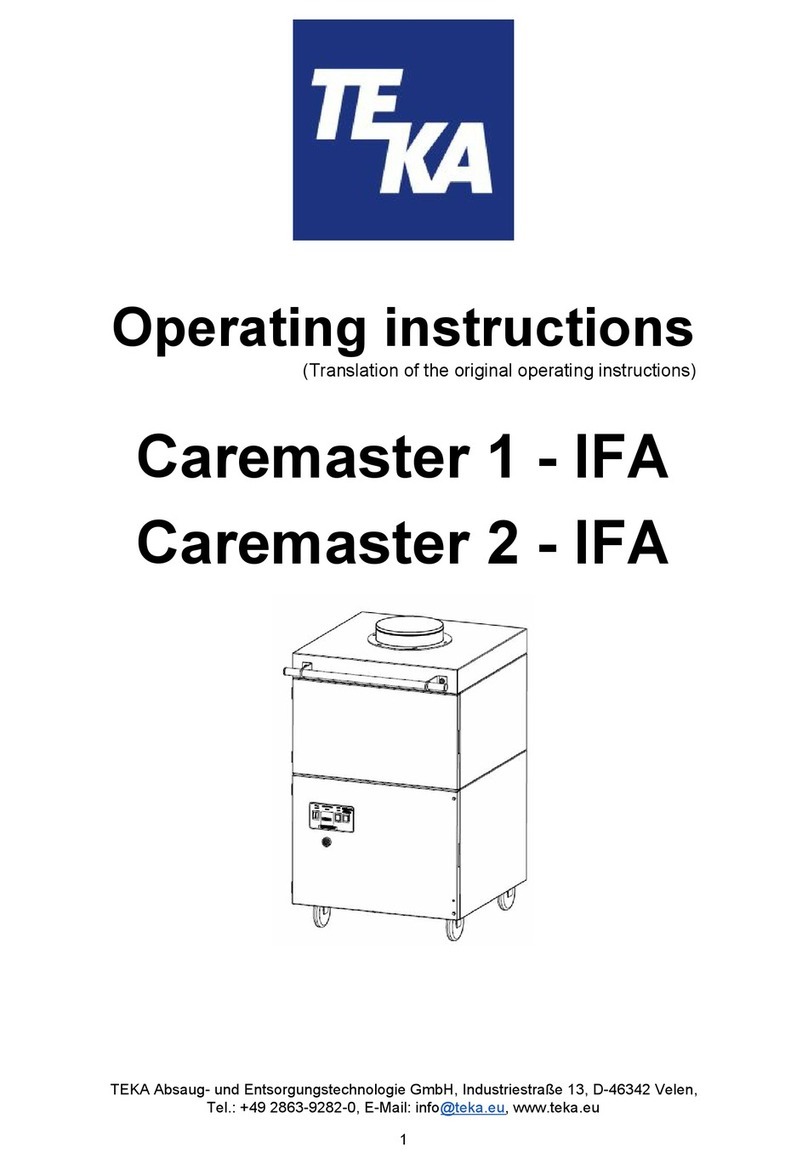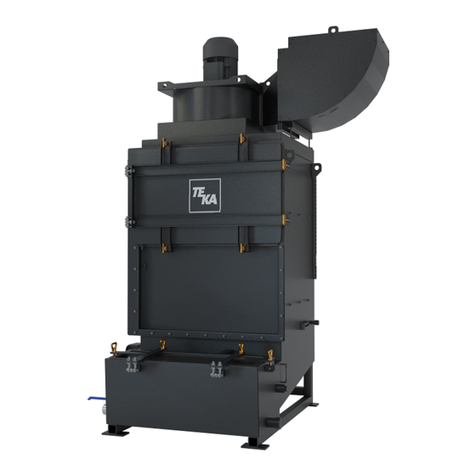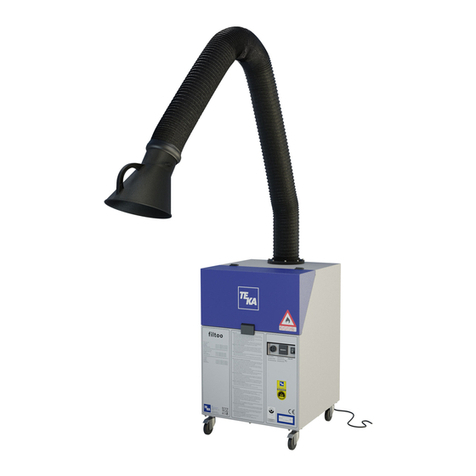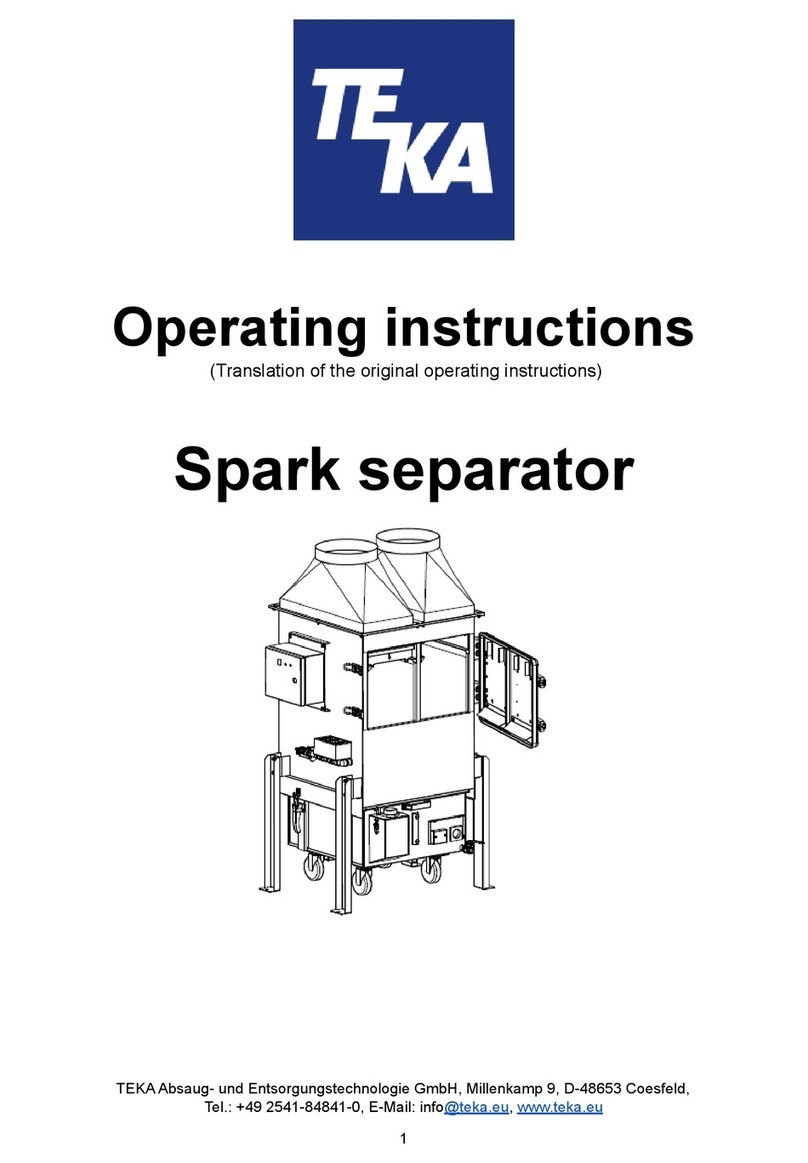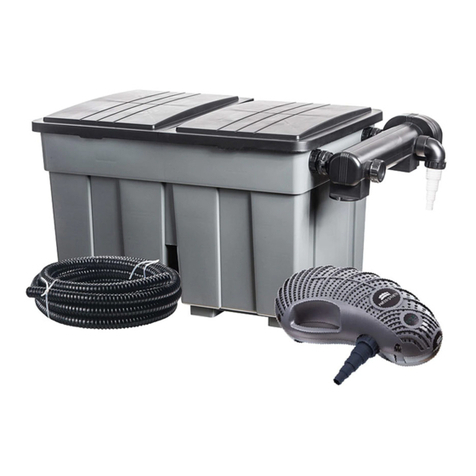
5.1. Connecting the suction line and exhaust air line
For extracting the contaminated air, a suction line must be connected to the suction nozzle (see chapter
2.1).
Danger for the respiratory tract arising from polluted ambient air. Dust deposits in the
suction pipe are possible.
Only operate the system if the necessary suction line is fitted. The suction line must be
dimensioned according to the application. If this has not already been carried out by TEKA, a
suitably qualified employee must be consulted. If the suction line includes extraction
elements (e.g. suction arms, pipe grills, etc.), these must also be included in the layout. If this
is the case then users must be informed of whether extraction elements can be used
simultaneously and, if this is possible, then which.
If the air shall be directly sucked off by an upstream machine, the suction line must be connected to the
capture opening of the upstream machine.
The exhaust air pipe must be attached to the exhaust nozzle (see chapter 2.1).
Danger to life when reaching the fan impeller.
The required exhaust air pipe must be attached before the commissioning.
Explosion hazard due to the formation of explosive deposits or explosive mixtures.
The suction ducting has to be dimensioned so that the air speed within the tube is at least
20m/s and that it is grounded against electrostatic charge. The lines must be kept as short as
possible and must be laid to the extraction point in a way that optimizes the flow in order to
prevent any deposits from forming in the lines. The lead of the exhaust air has to be
continually ascending to prevent the creation of explosive mixtures.
If the suction line is laid as a rising/falling structure in such a way that hydrogen might
accumulate there then the line must be equipped with a suitable vent hole prior to
commissioning. In this case, the hydrogen must be able to escape unobstructed. The vent
hole must not be covered or sealed. We recommend a hole of min. Ø5mm and this should be
identified using the enclosed labels:
If the clean air cannot be led outside, the operator must ensure, for example by providing
adequate technical/natural ventilation, that hydrogen is unable to accumulate in potentially
dangerous quantities inside the premises.
If the operator cannot exclude the possibility that effective sources of ignition may occur, then
the concentration of the dust arising at the extraction point within the line and the filter unit
must always be 50% by mass below the lower explosion limit (LEL).
BA_Nassabscheider_WNA-AL_211118_EN












